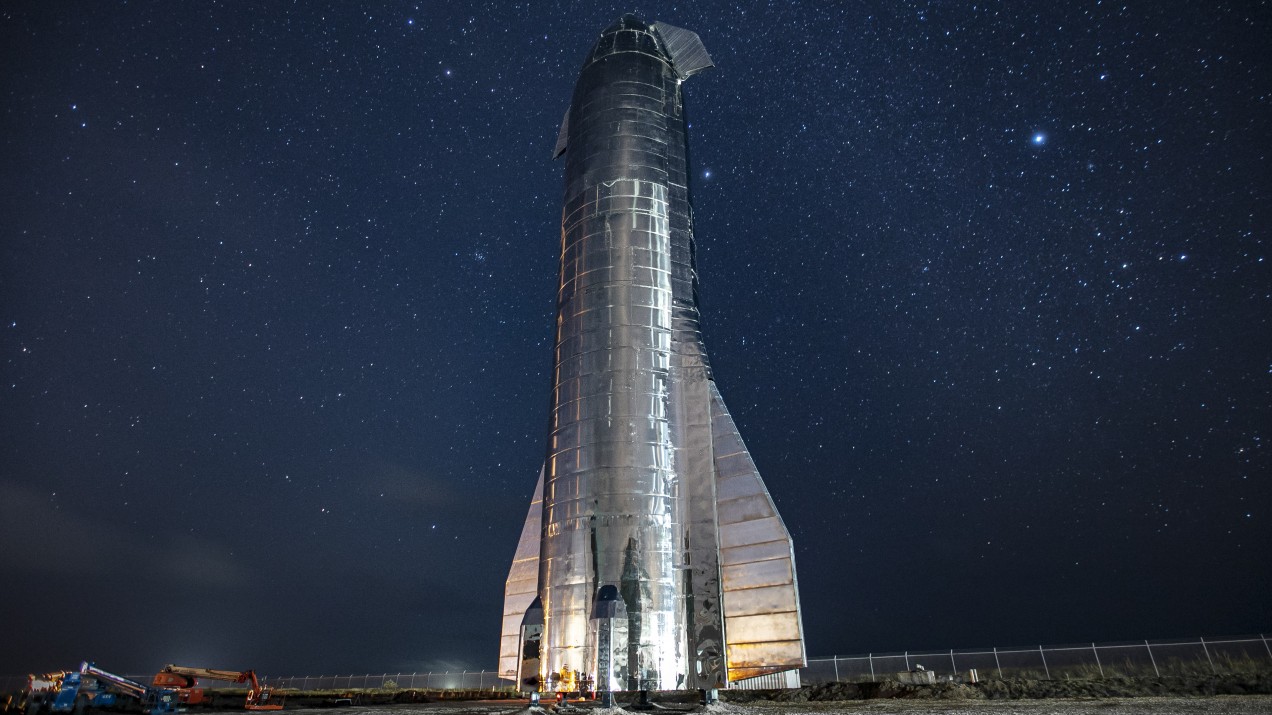

Space
The seven most exciting space missions of 2020
Four countries are sending robots to Mars, private companies will send humans into orbit, and we’re inching closer to seeing NASA return astronauts to the moon.

Last year was a dizzying one for space (and not always in a good way), but 2020 will prove to be just as busy, if not busier. There are a slew of missions on the world’s docket, going to the moon, to Mars, and into orbit. Some of these involve humans; some are for robots only. Here are the seven missions you ought to keep your eye on into the new year.
1. Four Mars missions, July 2020
It’s an unprecedented time for Martian exploration. There are four (four!) different missions sending new spacecraft to the Red Planet, all targeting launches for around July. The biggest is NASA’s Mars 2020 rover, armed with a slew of state-of-the-art instruments that will seek to tell us whether extraterrestrial life once existed (or even may currently exist) there. It’s even going to let loose a helicopter drone! China has its own rover, called Huoxing-1, going up to study the Martian terrain and atmosphere for 90 days. ESA and Roscosmos are teaming up to launch Rosalind Franklin, a rover named after the chemist who helped discover the structure of DNA. Appropriately enough, it will look for signs of life as well. And lastly, the UAE is going to send out an orbiter, the Hope Mars Mission, to study the planet’s atmospheric chemistry from above.
2. Commercial Crew, Q1
At long last––we hope!––American astronauts will launch into space from US soil for the first time since 2011. SpaceX and Boeing are in the final stages of safety testing and flight demonstrations before they carry NASA astronauts to the International Space Station on board their respective Crew Dragon and Starliner vehicles. Both companies are tentatively targeting the first quarter of 2020 to pull off their first crewed missions into space. Given the track history of the Commercial Crew Program, it’s best not to hold your breath. Still, we’re this close to seeing a brand-new spacecraft take people into space.
3. Artemis 1, November 2020
Formerly called Exploration Mission-1, this NASA mission will be the first flight of the Space Launch System, which will be the most powerful rocket in the world when it’s completely finished. But that’s still a way off and won’t happen in 2020. For Artemis 1, the first version of the SLS (involving just the lower stages) will send NASA’s Orion deep-space capsule on an uncrewed trip around the moon. Orion, which is meant to one day take astronauts to the moon and possibly to Mars, will spend approximately three weeks in space. Fair warning: there is a significantly good chance the mission will slip into 2021. Delays have become commonplace in the development of the SLS.
4. Chang’e 5, late 2020
That’s right: China has two missions going to extraterrestrial worlds in 2020. Chang’e 5, targeted for a late 2020 launch, is China’s most audacious lunar mission yet. A lander will attempt to collect nearly 4.5 pounds of moon rocks and dust from the western edge of the near side of the moon. After the samples are gathered, an ascent vehicle will take the spacecraft back up and rendezvous with an orbiter that will send a return capsule to Earth. If successful, it will be the first lunar sample return since the Soviet Union’s 1976 Luna 24 mission.
5. Mega-constellation launches, year-round
Next year is when we’re going to see the effects of mass satellite networks, both good and bad. By 2020’s end, SpaceX’s Starlink will be a 720-strong satellite network, and broadband service will be made available to consumers sometime in the second half of the year, the firm claims. Meanwhile, satellite internet competitor OneWeb is expected to begin monthly launches in January, and hopes to have over 600 satellites in orbit by the end of the year. It expects to offer service to consumers before the year is over as well. Concerns and complaints from astronomers and space traffic experts about the negative effects of these unwieldy mega-constellations are likely to get louder and more vociferous.
6. Starship, TBD
Starship, SpaceX’s shiny, reusable interplanetary spacecraft unveiled to the world in September, could quite possibly take people to Mars one day. But first it needs to prove it can actually get off the ground. Elon Musk says he hopes to send Starship on high-altitude test flights during 2020, as well as attempt an orbital flight in Q2 of next year. Musk has a reputation for suggesting time lines that are too ambitious, to put it kindly. So take some of this with a grain of salt, in other words. The big thing to keep in mind, however, is that Starship is happening, and there will definitely be some kind of flight tests to keep an eye out for.
7. New Shepard crewed launch, TBD
Speaking of space companies, we’d be remiss to forget Blue Origin, owned by Jeff Bezos and rival to SpaceX, Virgin Galactic, and others. Its flagship suborbital rocket was always envisioned to be something that could take tourists into space. The company has now successfully launched New Shepard 12 times. Six of those missions used the same rocket. Its latest launch, which sent its crew capsule into space (sans crew), was designed to closely resemble a mission with human passengers. CEO Bob Smith has said the firm expects to send humans into space sometime in 2020. As opposed to many of its competitors, Blue Origin has historically been pretty good about deadlines, so this is one mission to really watch for.
Take a look at what you might have missed this year. Here are the five biggest space failures of 2019.